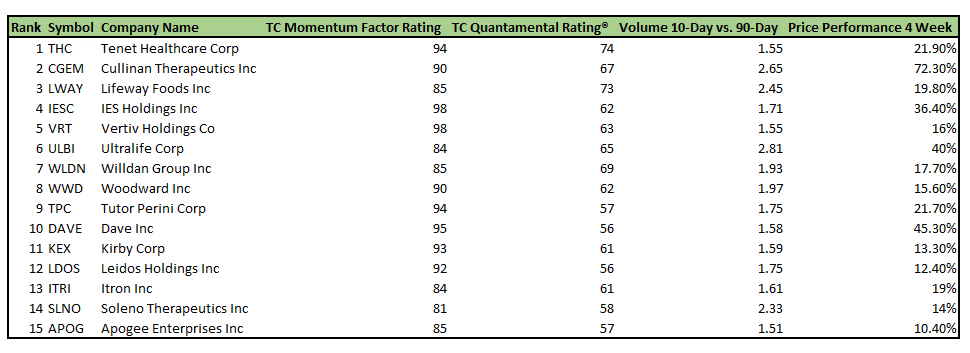As the SPX continues its rebound from April lows, in this edition of the Fundamental Report we’ll look at US-based equities showing robust momentum and out performance relative to the index. In order to narrow our search, we will create a screener using Trading Central’s Strategy Builder and Fundamental Insight tools.
We will focus on companies with a TC Quantamental Rating (TCQR) greater than 55 out of 100, indicating strong fundamentals compared to peers in its industry group. Moreover, we’ll also limit our search to stocks with a minimum TC Momentum Factor Rating of 80 out of 100, indicating extremely positive investor sentiment and outperformance against peers in the industry.
Additionally, looking at daily volume comparisons in the last 10-days vs the past 90-days, we will opt for those entities with a ratio of 1.5, indicating higher than usual volume in recent times. Finally, outperformance is key to identifying winners and thus we will only include those stocks with a minimum double digit performance of 10% in the prior 4 weeks.

THC:US
Tenet Healthcare, a diversified healthcare services company, is at the forefront of our screener, with an impressive TCQR of 74, the highest in our list, and a Momentum rating of 94. The stock has climbed 21.9% in the past 4 weeks.

CGEM:US
Cullinan Therapeutics is exhibiting a Momentum score of 90 as the biotech has soared 72.3% in the last 4 weeks. The stock also shows a noticeable ratio of 2.65 regarding its 10-day vs 90-day trading volume.

LWAY:US
Lifeway Foods, the health food company, also has one of the highest 10-day vs 90-day trading volume ratios, currently sitting at 2.45, while also boasting a TCQR of 73 and Momentum rating of 85.

IESC:US
IES Holdings, a provider of electro-mechanical solutions for industrial operations, has the highest TCQR in our list at 98 and a performance in the prior month showcasing a surge of 36.4%.

Trading Central Strategy Builder provides a back-testing capability to evaluate how well an investing strategy would have worked in the past. Using a five-year historical period with quarterly rebalancing, the screen described had a 27 percent annualized return compared with 11 percent for the S&P 500 index.